| Rubery, Owen & Company
Limited, Wrexham |
|
In the 1930s the Steel Equipment Department at the Darlaston
factory under the management of Mr. W. Reeves, and Mr. W.
Gwinnett (who later became Managing Director of Rubery Owen &
Kemsley, Australia), rapidly grew, and larger premises became
essential.
In 1945 after the war, there was a shortage of skilled labour,
and so the firm decided to take advantage of a Government scheme
to disperse work from industrial areas to designated development
areas. One of the development areas was Wrexham, well-known to
the Owen family, and birthplace of the late A. E. Owen.
The opportunity arose to acquire the Whitegate Factory, which had
been built by the Rubery Owen Structural Department for the
Ministry of Aircraft Production. The factory was purchased by Rubery Owen in mid 1946, but at that time was leased by the
Ministry of Aircraft Production to the Ministry of Works, as an
overflow factory for the manufacture of frames for the
pre-fabricated Arcon houses, the standard Ministry of Works
prefabricated design, to alleviate the housing shortage after the
war.
In December 1946 a few capstan machines were transferred from
Darlaston to form the nucleus of the Aviation Department, to
produce bright bolts and studs. |
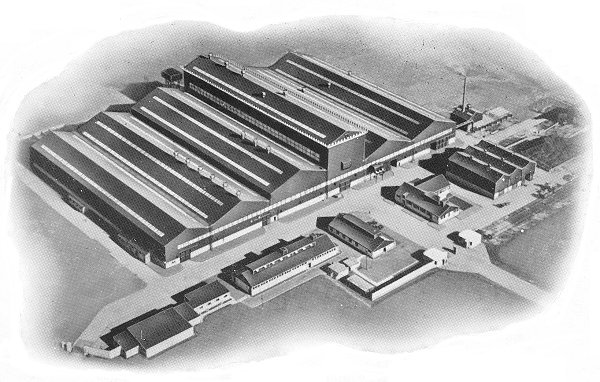
An aerial view of the Whitegate Factory. From the summer 1950 edition of
the staff magazine "Goodwill". |
|
Early in 1947, the Leabank Chair
Department began to transfer production to the Wrexham
site. Within six months from the completion of the
transfer, production had doubled. This was quite an
achievement considering that all of the local production
staff had to be trained in the kind of work they had never
previously experienced.
Around the middle of 1947 the
production of Arcon frames at the factory had ended, and
transfer of the Steel Equipment Department to Wrexham
began. When this had been completed in January 1948, the
factory began to function as an individual unit. |
|

Another view of the factory. |
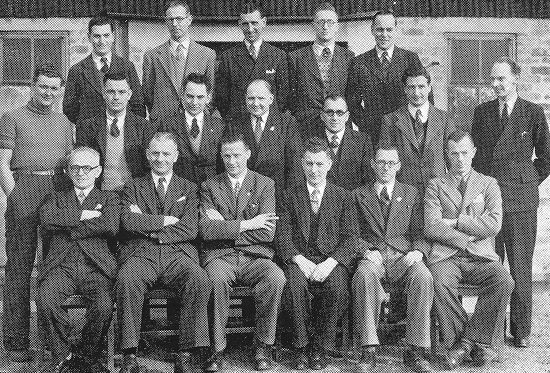
The ex-Darlaston people who
formed the nucleus of the new company.
Back row left to right: C. Heming, J. James, I.
Hall. H. Hughes, and C. Dukes.
Middle row left to right: F. Boynton, F. Bale, R. A.
Griffiths, H. Case, E. Abnett,
G. Coughlin, and E. Blakemore.
Front row left to right: W. H. Clayfield, G.
Dawkins, D. E. Newcombe, R. G. Broome,
S. Shinton, and S. Cook. From the April 1947 edition
of the staff magazine "Goodwill". |
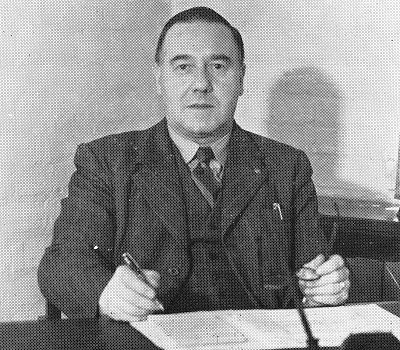
Mr. G. Anderson, Manager of Rubery,
Owen and Company Limited, Wrexham. From the April 1947
edition of the staff magazine "Goodwill". |
By the end of June the firm’s expanding export
market had exceeded the targets announced by the Board
of Trade by over thirty percent.
The department became known as Wrexham Metal
Equipment Department, and produced all kinds of office
furniture, and industrial storage products, including
stores shelving and racking, lockers, cupboards,
pallets, stillages, cow sheds for Australia, and shell
carriers for the Admiralty. |
|

Some of the firm's adjustable
shelving, lockers, and cabinets. |
| The Wrexham factory had been run from Darlaston as a
separate department until 1st April, 1973 when it was
formed into a new company, Rubery Owen (Wrexham)
Limited, and transferred to the Domestic Equipment
sub-group. |
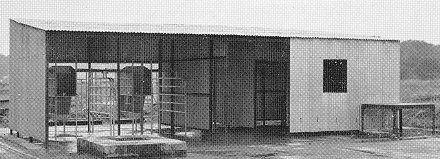
A cow shed for Australia. From the
April 1947 edition of the staff magazine "Goodwill". |

The Assembly Shop. From the April
1947 edition of the staff magazine "Goodwill". |
A sports ground was built, which came under the
control of the Social and Welfare Committee.
Activities included football, cricket, bowls, darts,
netball, tennis, angling, and shooting. The football
club was managed by Mr. H. Hughes, ably assisted by Mr.
C. Jukes, both ex-Darlaston men.
The works football team had great success in the
Third Division of the Welsh National League.
The indoor sports were held in Wrexham Drill Hall
which allowed employees to use the hall's billiards,
table tennis, and darts facilities. |
|
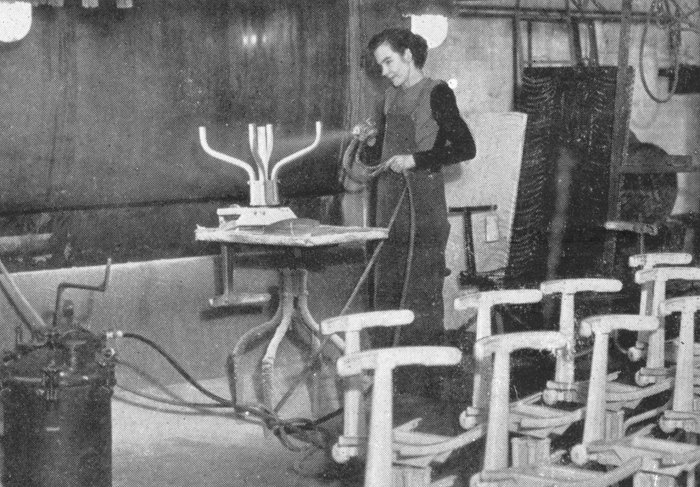
Spraying parts for office
chairs. |
|
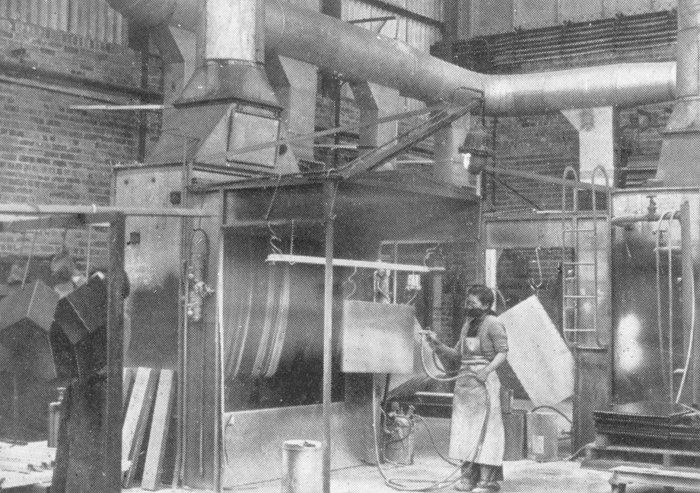
Spraying sheet metal parts. |
|
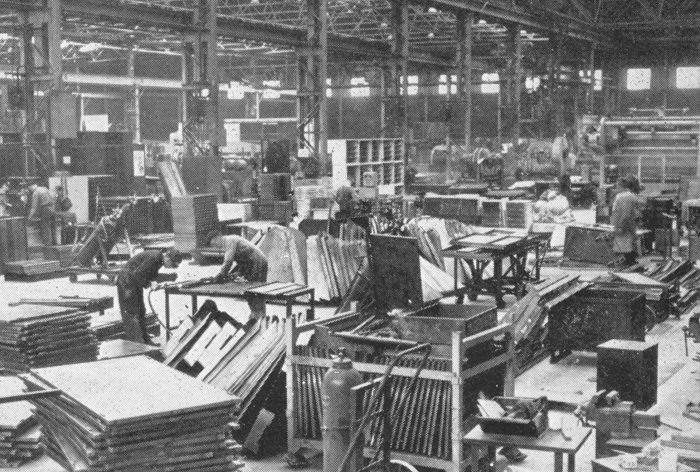
Assembling sheet metal
products. |
|
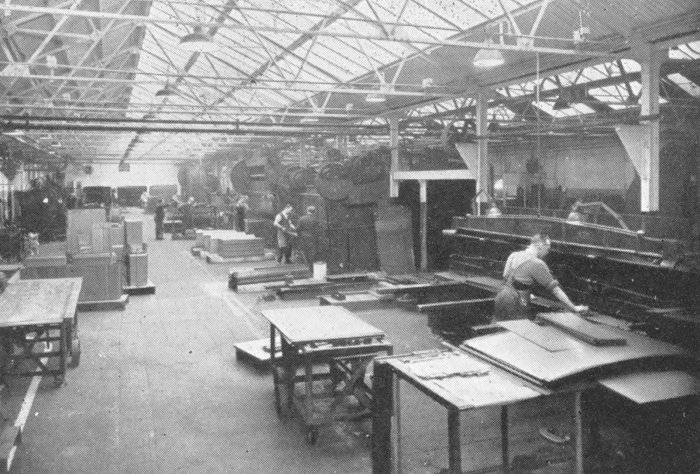
Part of the sheet metal shop,
with a guillotine and presses. |
| Making Leabank chair
upholstery.
From the April 1947 edition of the
staff magazine "Goodwill". |
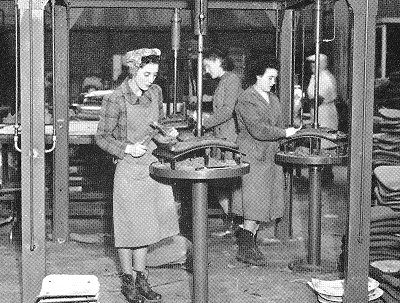 |
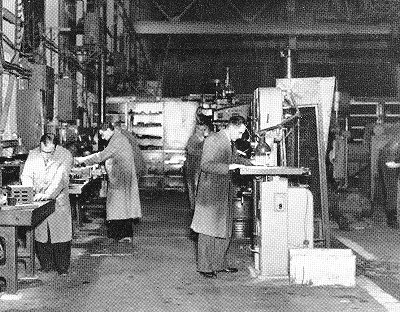 |
A corner of the Toolroom.
From the April 1947 edition of the
staff magazine "Goodwill". |
| Part of the Press Shop.
From the April 1947 edition of the
staff magazine "Goodwill". |
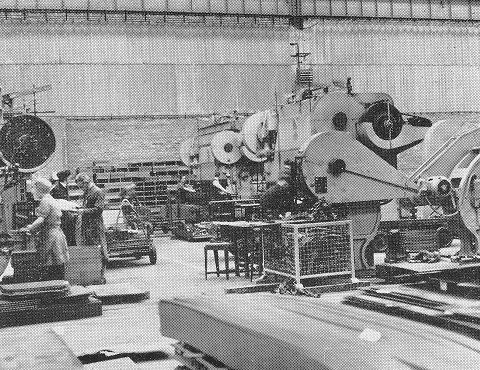 |
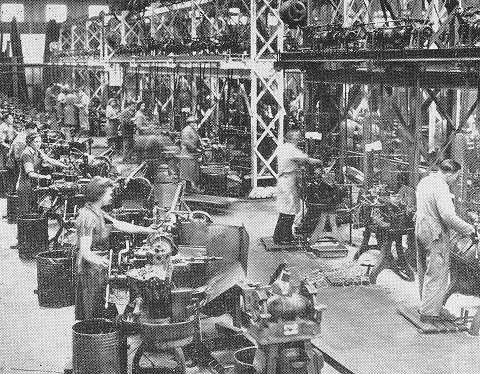 |
The Aviation Department.
From the April 1947 edition of the
staff magazine "Goodwill". |
 |
Return to
the
previous page |
|